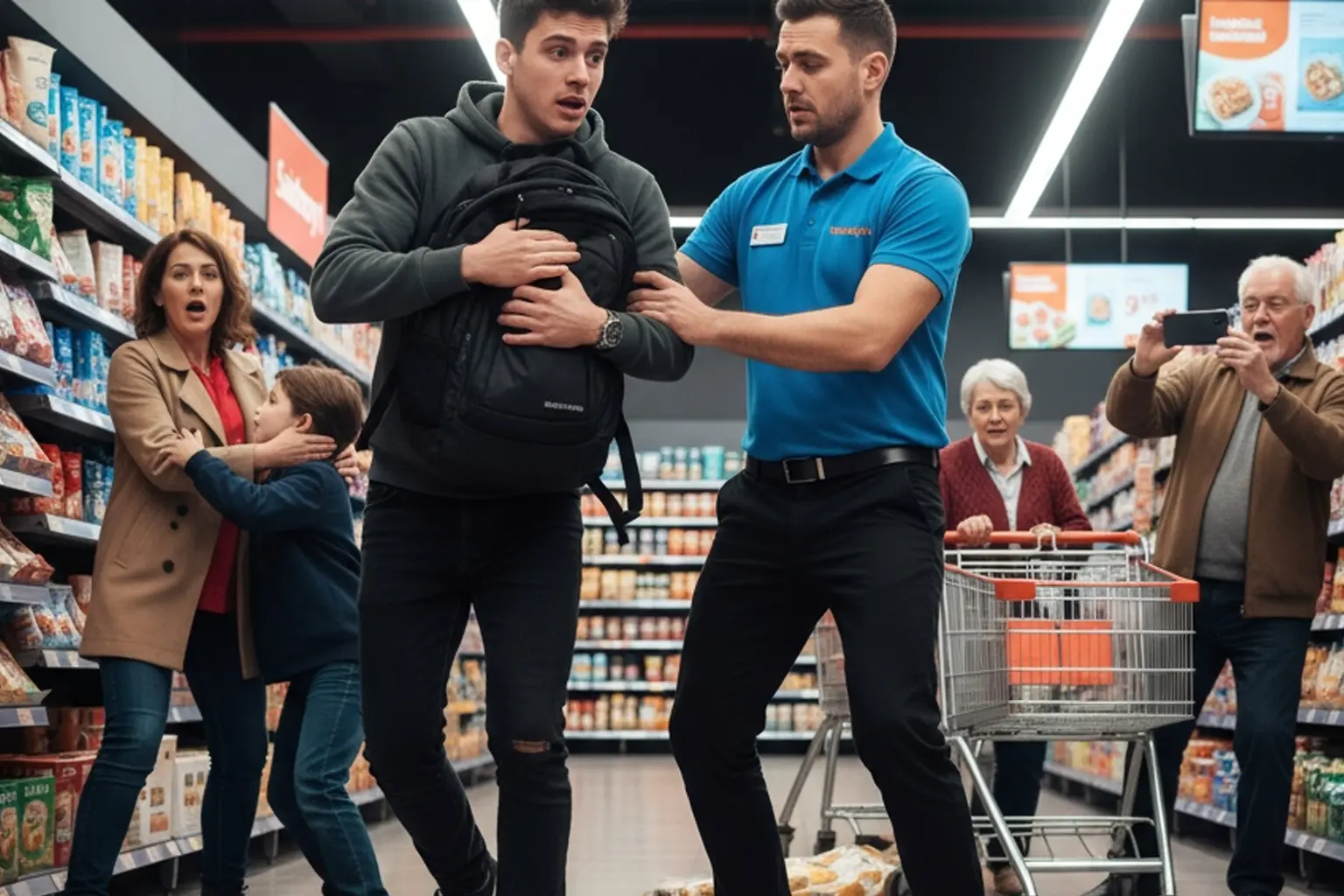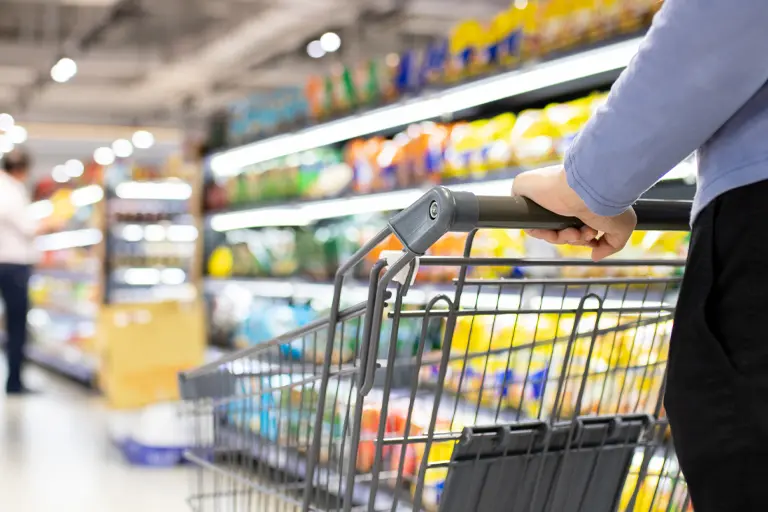Every year in the UK, supermarket operators lose millions to shoplifting, theft, and internal fraud. What often looks like “shrinkage” on the balance sheet is a symptom of deeper vulnerabilities: weak design, complacent staff, outdated tech, and evolving criminal tactics.
If you rely on signs and a lone guard to deter theft, you’re leaving money on the shelf.
This article is your complete guide to preventing shoplifting in supermarkets, written for retail leaders who want step-by-step tactics, real-world examples, and a roadmap to turn loss into profit.
We’ll cover modern threats, proven strategies, implementation plans, legal constraints, and how your supermarket can stay one step ahead of the criminals.
Understanding the Threat Landscape in Supermarkets
To outsmart shoplifters, you must first understand how they operate in modern supermarkets.
Modern Shoplifting Techniques & Trends
| Method | Description | Why It Works |
|---|---|---|
| Distraction / Team Theft | Multiple accomplices create confusion while one steals | Overwhelms staff, shifts attention |
| Label Switching | Swapping or scanning cheaper labels on expensive items | Hard to detect without scale verification |
| Self-checkout Abuse | Skipping scans, wrong barcode, partial scans | Minimal oversight at self-service tills |
| Return Fraud | Fake refunds or collusion with staff | Internal weaknesses exploited |
| Courier Impersonation | Fake drivers gain access to back-of-house | Exploits trust and routine |
Data & Market Trends:
- Recent UK retail crime reports estimate £2+ billion in losses annually from shoplifting and fraud. The Police Foundation
- Incidents involving violence or weapon use are rising, over 70 such incidents per day across UK retail. The Police Foundation
- Self-checkout proliferation has led to “automation-driven theft”, shifting the tactics criminal’s use. The Police Foundation
- Organized retail crime (ORC) is becoming more sophisticated, turning small-scale theft into industrial-scale operations. The Police Foundation

Why Old Methods Don’t Hold Up
Many supermarkets rely on:
- Physical guards in generic uniforms
- Passive CCTV monitored only after-the-fact
- Manual checks or random exit policies
- Static display setups
These can deter casual theft, but modern criminal networks test these defences:
- They observe routines and timing
- They exploit weak zones (blind spots, self-checkouts, staff-break areas)
- They adapt when a store “tightens up”
In other words: prevention is not a static checklist, it’s a constantly evolving system.
As one commentary put it: retail crime prevention is a “Red Queen race”, you must continually adapt to stay in place. The Police Foundation
Click here for Luxury Retail Security
Train Staff to Spot the Signs of Theft
Your frontline staff are your most valuable asset in stopping theft, but only if they know what to look for.
Key training points:
- Identifying suspicious behaviours (e.g. nervous glancing, loitering)
- Recognising team-based distraction techniques
- Understanding self-checkout abuse patterns
- Knowing when and how to engage a suspect safely
Best practices:
- Run monthly “awareness refreshers” with real-world examples
- Use internal incident logs to create case-based training
- Encourage a “watch and report” culture, not confrontation
Upgrade CCTV and Real-Time Monitoring
Static CCTV is no longer enough. To truly deter and respond, use a layered visual system:
| Technology | Purpose | Best Placement |
|---|---|---|
| 4K CCTV Cameras | High-quality ID and evidence | Entrances, exits, high-theft aisles |
| Dome Cameras | 360° coverage and deterrence | Self-checkouts, alcohol zones |
| AI Analytics | Detects loitering, motion patterns | All shop zones, especially blind spots |
| Remote Access Apps | Real-time viewing on the go | Management dashboards |
Pro Tip: Make CCTV signage bold and visible. Thieves avoid stores with real-time monitoring.
Redesign Store Layout for Visibility
Thieves exploit blind spots, high shelving, and cluttered aisles.
Design tips to reduce theft:
- Keep shelves low near entrances and exits
- Use mirrors on corners and endcaps
- Position staff or security near high-risk areas
- Group high-theft items where they can be seen from tills or monitored zones
What to avoid:
- Placing expensive items near fire exits or stockrooms
- Allowing overcrowded displays to block camera views
Protect Self-Checkouts from Abuse
Self-checkouts account for a significant rise in “low-level but repeated” theft.
Common tactics:
- Swapping labels for cheaper items
- Skipping scans
- Selecting incorrect produce codes
What you can do:
- Use AI checkouts with scale sensors to detect weight mismatches
- Implement randomised bag checks (polite, professional)
- Position trained staff to monitor 4–6 checkouts at a time
- Flash customer messages on-screen when errors occur
Sample signage:
“All self-checkouts monitored by AI for accuracy and security. Help us protect our store.”
Secure Entry/Exit Points with Presence and Tech
Professional thieves often:
- Conceal items and exit during busy periods
- Exploit exits when staff are distracted
- Use “pushout theft” (filling trolleys and walking out confidently)
Prevent this with:
- SIA-licensed guards near exits
- Auto-lock sliding doors on alarm triggers
- Receipt scanners or random checks
- CCTV positioned to record exits clearly
Tag High-Risk Items
Use EAS tags and security wrappers on:
- Meat and alcohol
- Baby formula
- Razor blades and over-the-counter meds
- Branded cosmetics or hair care
Tips for tag effectiveness:
- Keep tagged items in view of staff
- Combine with magnetic release-only packaging
- Position de-tagging stations away from exits
Employ Visible, Trained Security Officers
Security guards do more than deter, they reassure customers and respond fast to incidents.
Traits of effective retail security officers:
- Calm, confident posture
- Good customer service skills
- Trained in de-escalation
- Familiar with store layout and policies
Use officers to:
- Greet customers at entry
- Patrol high-risk zones
- Assist with receipt checks or detain suspects safely
- Log incidents using digital apps (e.g. FastFields)
Log Every Incident and Learn from It
Too many retailers rely on memory or handwritten logs. You need:
- A structured incident reporting tool
- Pattern review every 30 days
- A heat map of theft locations and times
Data to track:
| Data Point | Why It Matters |
|---|---|
| Time of theft | Shows peak risk windows for smarter scheduling and monitoring |
| Aisle/product stolen | Tells you where to deploy visibility or relocate high-risk items |
| Method used | Helps adapt training, signage, and surveillance strategies |
| Response time | Improves reaction planning and identifies gaps in your protocol |
Use Psychology: Make Thieves Feel Watched
Even the illusion of surveillance can deter casual thieves. Use:
- Signage like: “This area is monitored by smart surveillance”
- Mirrors and lighting to remove “safe” hiding zones
- Greet all customers within 5 seconds of entry (“5-second rule”)
Research shows eye-level posters with images of watching eyes reduce theft by up to 30%.
Review, Adapt and Reassess Every Quarter
Shoplifters evolve. Your strategy should too.
Quarterly checklist:
- What’s working?
- Where are losses still occurring?
- Any staff training gaps?
- Are we testing new tech?
- Have we reviewed store layout recently?
These real-world examples demonstrate how strategic changes can significantly reduce theft, increase staff confidence, and improve the overall shopping experience, all while keeping operational costs manageable.
Case Studies
Case Study 1: Mid-Sized Supermarket, Greater Manchester
Problem:
Persistent theft of alcohol and meat products near the rear of the store. Staff felt unsafe confronting suspects, and incidents were often under-reported.
What we found:
- Poor camera angles in high-theft areas
- Aisle layout created blind spots
- Lack of exit control or real-time monitoring
- Staff lacked incident reporting tools
Solution:
- Upgraded to dome-style AI-powered CCTV
- Repositioned shelving for line-of-sight
- Introduced one roaming SIA-licensed officer (non-confrontational presence)
- FastFields digital reporting system installed on staff tablets
- “Zone ownership” given to department leads
Result (3 months):
- 58% reduction in reported theft
- Improved police response due to better logs
- Staff reported feeling safer
- Weekly losses from theft fell by over £700
Case Study 2: National Chain – High Street Express Store
Problem:
Organised youth shoplifting, groups entering simultaneously, distracting staff, grabbing high-value goods and fleeing.
What we found:
- No door presence during school-leaving hours
- Self-checkout had no oversight
- Staff overwhelmed by groups and avoided interaction
Solution:
- Timed patrols by uniformed guards between 3–5 PM
- Trained staff in group-disruption tactics (friendly greetings, positioning)
- Added “watching eyes” signage and AI alerts for suspicious movement
- Used subtle in-store announcements to break up forming groups
Result (2 months):
- Major drop in group incidents
- 73% fewer unpaid items detected at self-checkout
- Staff regained confidence handling groups
Case Study 3: Budget Supermarket with No Guarding Budget
Problem:
High theft rates, but limited funds for staff or guarding
What we found:
- No deterrents beyond CCTV
- Alcohol and tobacco near exit
- Internal theft not being monitored
Solution (Low-cost):
- Repositioned alcohol/tobacco to central view
- Used mirrors and low-cost convex domes to eliminate blind spots
- Created a “daily security sweep checklist” for managers
- Printed clear signage about prosecution of theft
Result (1 month):
- 34% fewer thefts reported
- Staff felt more in control
- Business had structure without needing major investment
Shoplifting Prevention Table for Supermarkets
| Area | What to Check | Prevention Tip |
|---|---|---|
| Entrances & Exits | Clear line of sight, exit signage, mirror coverage | Use CCTV, security presence, greet all customers |
| Self-Checkout | Visible oversight, weight sensors, AI detection | Train staff, display monitoring notices, random checks |
| High-Theft Items | Tags in place, layout visibility | Keep near staffed areas, tag stock, rotate displays |
| Staff Training | Can they spot common tactics? | Run short monthly awareness briefings |
| Technology | CCTV working? Analytics active? | Upgrade to smart systems where possible |
| Incident Logs | Are incidents being tracked and reviewed? | Use digital tools, conduct monthly reviews |
Supermarket Security That Actually Works
Deter Thieves. Protect Staff. Boost Profit.
Shoplifting doesn’t just hit your stock room, it drains morale, disrupts service, and risks staff safety.
We deliver smart, cost-effective supermarket security solutions that work in the real world. From visible deterrents to self-checkout protection and discreet guard services, we tailor everything to your store’s needs.
Implementation Roadmap – From Plan to Prevention
Whether you’re running a single local supermarket or managing security for a national chain, prevention only works when it’s implemented consistently. This roadmap shows how to turn ideas into action, without overwhelming your team or your budget.
Phase 1: Quick Wins (0–30 Days)
These actions require minimal budget but make a noticeable difference right away.
- Walk the Store with “Theft Vision”
Audit the store from a thief’s perspective. Where are the blind spots? What items are most accessible? What would you steal? - Move High-Risk Items into View
Bring alcohol, razors, meats, and baby formula closer to checkouts or staff line-of-sight. - Train Staff on Common Tactics
Run a 20-minute awareness session with photos, example videos, or recent incidents. - Print and Display Clear Signage
Phrases like “All areas monitored” or “Shoplifters will be prosecuted” deter casual theft. - Introduce a Security Checklist for Duty Managers
Use a simple daily checklist: are mirrors clean, EAS tags in place, cameras online, exits monitored?
hase 2: Structural Upgrades (30–90 Days)
These upgrades may require budget approval or supplier coordination but offer a strong ROI.
- Rearrange Shelving for Visibility
Lower stock displays near exits, remove cluttered high-end caps, and open up line-of-sight across aisles. - Upgrade Your CCTV Network
Focus on critical areas: entrances, self-checkout, high-theft aisles, staff exits, and loading bays. Prioritise quality and recording duration. - Add or Upskill a Security Officer
If using in-house staff, provide conflict training and store-specific SOPs. If outsourcing, ensure guards are SIA-licensed and customer-facing. - Introduce Real-Time Incident Reporting Tools
Apps like FastFields, SmartTask, or Trackforce Valiant can digitise logs and help you spot theft patterns quickly.
Phase 3: Long-Term Prevention Strategy (90+ Days)
Build security into your operations for lasting impact.
- Run Quarterly Security Reviews
Look at: incident logs, staff reports, layout changes, customer complaints, product loss reports, and seasonal risks. - Invest in Smart Analytics
Modern systems can detect loitering, identify repeat offenders, and even predict theft risk based on behaviour. - Create a Security Culture
Encourage reporting, reward vigilance, and make security a shared responsibility, not just the guard’s job. - Build Relationships with Local Police or PCSOs
Invite them to walk your store once per quarter and use them as a sounding board for suspicious activity. They often know about active crime gangs in your area before you do.
This roadmap ensures your efforts aren’t just a one-time fix, they evolve with the threats you face.
Legal, Staff Safety & Compliance
Preventing shoplifting isn’t just about protecting stock, it’s about protecting your people, staying legally compliant, and avoiding costly mistakes that can land your business in hot water.
Here’s what every supermarket owner and manager needs to know.
What Can You Legally Do If Someone Is Stealing?
Under UK law, you and your staff can detain someone suspected of shoplifting, but only under very specific conditions.
You must:
- Have reasonable grounds to suspect theft (e.g. they were seen concealing an item)
- Use reasonable force only if necessary to prevent escape
- Detain only until the police arrive, and for a reasonable time
- Not search the suspect yourself, only police can do that
Staff should never confront suspects unless trained and authorised by the store’s internal policy.
What You Cannot Do:
- Physically block or restrain someone based only on suspicion
- Touch the person or their bags without consent
- Detain someone based on profiling or gut instinct alone
- Share CCTV footage on social media, this breaches GDPR
- Publicly accuse or shame the suspect
A poorly handled confrontation can result in:
- Assault charges
- Unfair detention claims
- Negative publicity
- Employer liability
If in doubt: observe, log, and call the police.
Protecting Staff from Confrontation
Retail staff are not security officers, and they should never be expected to:
- Chase suspects
- Physically intervene
- Handle abuse without backup
To protect your team:
- Make it clear: safety > stock
- Train them to recognise escalation risk and step back when needed
- Give staff a private, discreet way to report suspicious behaviour (e.g. a manager’s code word or panic button)
- Provide an incident reporting tool that captures everything without paperwork delays
Also consider:
- Installing panic buttons at till points
- Using 2-way radios between floor staff and managers
- Training managers in conflict de-escalation techniques
Compliance & Your Insurance Policy
Many retail insurance policies require you to demonstrate due diligence before processing claims.
That includes:
- Valid CCTV footage (stored for a set duration)
- Documented incident logs
- Proof of EAS tags or theft prevention systems
- Training records for staff and guards
- Up-to-date risk assessments
Failure to comply may result in a rejected claim.
Supermarkets that treat security as a formal process, not just a visual deterrent, are more likely to get insurance payouts approved and avoid higher premiums.
Shoplifting Prevention Starts with a Plan
Reduce Retail Theft Before It Costs You More
Every stolen item chips away at your profits and your team’s confidence. With organised shoplifting on the rise, now’s the time to act.
Future Risks & Innovation in Supermarket Theft Prevention
As technology evolves, so do the tactics of shoplifters. Supermarkets must not only respond to current threats but also anticipate future ones to stay ahead of organised crime, fraud, and internal vulnerabilities.
Here’s what’s coming, and how to prepare.
Emerging Threats on the Horizon
Organised Crime Rings Getting Smarter
- Shoplifting is no longer just opportunistic, organised gangs are coordinating thefts across regions.
- They study staffing patterns, CCTV placement, and weak points.
- Gangs may use decoys, children, or elderly individuals to mask criminal activity.
AI-Evading Tactics
- As retailers adopt AI-powered surveillance, experienced shoplifters are adapting.
- Wearing reflective clothing, using heat packs to throw off thermal cameras, or mimicking staff movement patterns are real tactics already being seen.
Fake Delivery Drivers & Impersonators
- Criminals are increasingly posing as couriers or staff to access back rooms or secure areas.
- Without strong access protocols, this method can lead to large stock losses.
Digital Distraction & Mobile Abuse
- Thieves use mobile phones to:
- Film store layouts
- Signal to accomplices
- Fake emergencies to distract staff
Innovations Leading the Way
AI-Powered Video Surveillance
- Modern systems don’t just record, they think.
- Smart cameras can detect:
- Loitering in high-risk zones
- Item concealment motions
- Repeated behaviour by known individuals
Behavioural Analytics
- Some systems monitor how people shop, not just what they buy.
- Abnormal patterns (e.g. entering and exiting repeatedly, hovering in non-product zones) can trigger real-time alerts for staff or security.
Mobile Patrol & Reporting Apps
- Security officers now use incident management apps to log activity, complete digital check-ins, and track suspicious individuals.
- This creates better documentation for police and insurers.
Shelf-Sensor Technology
- Pressure-sensitive or RFID-enabled shelves can detect when multiple items are removed rapidly or out of sync with buying behaviour.
- Especially useful for:
- Alcohol
- Razors
- Baby products
How to Stay Ahead
To futureproof your supermarket’s security strategy:
- Regularly review your risk profile
- Upgrade technology in phases (don’t wait for a major incident)
- Collaborate with local law enforcement for trend reports
- Conduct surprise audits to uncover weaknesses
- Train staff to expect unusual tactics, not just the classics
- Build a flexible security strategy that can evolve with criminal behaviour
The future of shoplifting is smarter.
Make sure your defence is too.
Shoplifting in supermarkets isn’t just a nuisance, it’s a profit leak, a staff safety risk, and a reputational hazard.
But with the right prevention strategy, you can take control.
Whether you’re managing a single convenience store or a national supermarket chain, the key is the same:
Make shoplifting feel risky, not easy.
That doesn’t mean turning your store into a fortress. It means combining:
- Staff training
- Smart technology
- Thoughtful layout
- Subtle, effective deterrents
- Real-time reporting
- And most importantly, a culture of vigilance
Call The WExperts and Stop Shoplifting in your supermarket
At Leisure Guard Security, we help retailers like you reduce losses, protect staff, and create safer, more profitable stores, all without disrupting the customer experience.
We’ve worked with independent stores, national chains, and high-end retailers. Our solutions are built around your brand, your budget, and your operational flow.
Stop Shoplifting Before It Starts
Discover how smart, discreet security can reduce losses and protect your team.
Book your free supermarket security assessment today
Or call us on 0800 035 6607 to speak with our retail security specialists.
FAQ's How Hotels Reassure Guests After a Security Incident
What are the most common shoplifting methods in supermarkets?
Shoplifters in supermarkets often use a variety of tactics that go beyond simple theft. Common methods include concealing items in bags, clothing, or prams; price tag switching or barcode substitution; self-checkout manipulation, such as skipping scans or scanning cheaper items; distraction techniques, where one person diverts staff attention while another steals; and impersonation, where a thief poses as staff, a contractor, or a courier to access back-of-house areas.
Each of these methods exploits weaknesses in surveillance, staff planning, or layout design. By understanding these theft techniques, sometimes referred to as retail crime methods or supermarket theft tactics, you can tailor prevention strategies that target the vulnerabilities specific to your store environment.
How do I reduce theft at self-checkouts?
Self-checkout abuse has become a leading vector for retail loss, particularly in supermarkets. To reduce theft at self-checkouts, implement scale validation systems that compare the weight of scanned items to the expected weight; use AI-based monitoring and video analytics to flag suspicious behaviour; deploy staff to monitor multiple kiosks actively; and use random bag or receipt checks to deter abuse.
Additionally, display clear notices such as “Area under video surveillance” or “Self-checkout monitored for security” — which act as psychological deterrents. Use mis-scan detection software and alert systems to flag when a customer’s actions deviate from expected purchasing behaviour. By combining technology, staff presence, and signage, you create a robust self-checkout security layer that discourages misuse and shrinkage.
Is it legal to stop a shoplifter in the UK?
Yes, but only under very specific conditions. Under UK law, staff have the right to conduct a citizen’s arrest if they have reasonable grounds to suspect someone of theft, and only if the theft is in progress and force used is reasonable and proportionate. You cannot detain someone based solely on suspicion; there must be evidence or observation of concealment.
However, staff should ideally be trained to observe, report, and call the police rather than confront suspects. Use incident logs, CCTV footage, and follow internal procedures. Improper detainment can lead to false imprisonment claims, assault allegations, or legal liability. For legal safety and staff protection, your official store policy should define when and how security or senior staff intervene and escalate to law enforcement.
How often should supermarkets review their security plan?
Security plans must evolve, we recommend at least quarterly reviews, though many high-risk stores benefit from monthly mini-audits. Regular reviews help you monitor theft trends, shifts in customer flow, changes in staff patterns, and crime data in the area.
During a review, analyze incident logs, CCTV footage, staff reports, layout changes, and technology performance. Use the data to optimize guard deployment, relocate blind spots, upgrade software/hardware, and refine staff training. By treating your shoplifting prevention strategy as a living system — not a static policy — you stay one step ahead of evolving criminal tactics and ensure your loss prevention remains effective.
What should be included in a shoplifting incident log?
A comprehensive incident log should capture structured data to detect patterns and support investigations. Essential fields include: date/time of the incident, location or aisle, product(s) targeted, method used (concealment, distraction, impersonation, etc.), staff involved or present, response time, outcome (apprehended, fled, CCTV captured), and additional notes (e.g., appearance description, accomplices).
Using digital tools (such as retail security apps or cloud-based log systems) enhances reliability, makes data searchable, and facilitates trend analysis. When backed by CCTV, witness statements, or digital reports, these logs support insurance claims, police liaison, and strategic adjustments in your theft prevention plan.
Do visible security guards really deter shoplifters?
Yes, a uniformed, competent security presence is a powerful deterrent against opportunistic and even organised theft. When offenders see a guard, they perceive an increased risk of detection and confrontation, making many abandon attempted thefts before action.
However, to be effective, guards must be trained in retail protocol, customer service, and observation skills, not just physical presence. They should be mobile, not static; approachable but alert; and fully integrated into your store’s theft prevention culture. Their mere presence, sometimes termed manned guarding for retail, acts as a psychological barrier to theft, particularly in high-theft zones or exit areas.
Can I use CCTV to monitor customers legally?
Absolutely, provided your CCTV system complies with data protection (GDPR) and UK privacy laws. Key requirements include visible signage warning of video recording, ensuring footage is stored securely, limiting retention periods, controlling access, and only using footage for legitimate purposes like loss prevention or safety.
Avoid placing cameras in private or employee-only areas like restrooms. Use audit logs, apply encryption, and restrict playback permissions. Proper criminal and employee training should accompany CCTV use so staff handle footage responsibly and maintain trust while maximizing the security benefit.
What areas of the store are most vulnerable to theft?
Vulnerable zones often include: entrances, exits, self-checkout points, blind corners, high-value product aisles (alcohol, meat, baby formula), endcaps, and backroom access areas. These zones are high-risk because they combine foot traffic, reduced oversight, and easy concealment options.
By mapping your store’s loss hotspots and traffic flow, you can redesign layouts, reposition cameras or mirrors, and assign staff zones more effectively. Prioritize line-of-sight improvements and theft controls where theft frequency is highest — that’s where your investment yields greatest return.
Avoid placing cameras in private or employee-only areas like restrooms. Use audit logs, apply encryption, and restrict playback permissions. Proper criminal and employee training should accompany CCTV use so staff handle footage responsibly and maintain trust while maximizing the security benefit.
What’s the impact of shoplifting on supermarket profits?
Shoplifting, often classified as shrinkage, can shave off significant margins in a business model built on slim profits. Even minor daily losses accumulate into tens or hundreds of thousands of pounds annually. Beyond stock loss, there are indirect costs: staff time investigating, customer disruption, insurance premium increases, and reputational damage.
For supermarkets, theft can easily represent 1% to 2% of revenue loss, which may outweigh the cost of robust prevention measures. In short: reducing shrinkage via theft prevention is often among the highest ROI investments a store can make.
Are EAS tags effective for preventing theft?
Yes, Electronic Article Surveillance (EAS) tags remain one of the most effective retail deterrents, especially for fragile or high-resale items like alcohol, cosmetics, and electronics. If an unpaid item passes through EAS gates, an alarm triggers a response.
To maximize effectiveness, combine EAS with tagging policies, random checks, and staff awareness. Use magnetically locked packaging, visible signage, or double-tagging for high-risk SKUs. EAS technology acts as both a physical barrier and a psychological deterrent against theft.
How do I protect my staff from violent or aggressive shoplifters?
Staff safety must be a top priority. Provide training in conflict de-escalation, nonviolent communication, and personal safety. Use panic buttons, duress alarms, or silent discreet signals to alert security or management. Ensure security guards or supervisors are nearby to intervene if a situation escalates.
Your store policy should emphasize observation over confrontation and instruct staff never to physically attempt detainment unless trained and no safer alternative exists. Protecting your team protects your brand too.
To maximize effectiveness, combine EAS with tagging policies, random checks, and staff awareness. Use magnetically locked packaging, visible signage, or double-tagging for high-risk SKUs. EAS technology acts as both a physical barrier and a psychological deterrent against theft.
Should I confront shoplifters myself?
In most cases, no. Untrained staff trying to confront suspects risk physical harm, legal liability, or public backlash. Instead, staff should be trained to observe carefully, trigger a coded alert, record details, continue monitoring, and involve security or police.
Only properly trained security personnel, or law enforcement, should intervene physically. The priority is always safety, gathering evidence, and ensuring a swift, confident response, not heroics.
Your store policy should emphasize observation over confrontation and instruct staff never to physically attempt detainment unless trained and no safer alternative exists. Protecting your team protects your brand too.
To maximize effectiveness, combine EAS with tagging policies, random checks, and staff awareness. Use magnetically locked packaging, visible signage, or double-tagging for high-risk SKUs. EAS technology acts as both a physical barrier and a psychological deterrent against theft.
What’s the best CCTV setup for a supermarket?
The best CCTV system is multi-layered and smart. Use 4K or high-definition cameras at entrances and exits, dome or fisheye cameras for overview coverage, and AI analytics to detect loitering or suspicious patterns. Pair with remote monitoring, clear signage, and redundant storage for reliability.
Ensure camera placement avoids blind spots. Prioritize high-risk SKUs, staff routes, checkouts, and loading areas. A good system not only records events, it prevents them by enabling real-time response and threat detection.
Only properly trained security personnel, or law enforcement, should intervene physically. The priority is always safety, gathering evidence, and ensuring a swift, confident response, not heroics.
Your store policy should emphasize observation over confrontation and instruct staff never to physically attempt detainment unless trained and no safer alternative exists. Protecting your team protects your brand too.
To maximize effectiveness, combine EAS with tagging policies, random checks, and staff awareness. Use magnetically locked packaging, visible signage, or double-tagging for high-risk SKUs. EAS technology acts as both a physical barrier and a psychological deterrent against theft.
How can store layout reduce the risk of theft?
Thoughtful store design is a powerful theft deterrent. Use lower fixtures near exits, clear sightlines, strategic mirror placement, and open floor plans. Use open display shelving instead of blocked aisles. Keep high-value or theft-prone items within view of staff or cameras.
Avoid “blind corners” or hidden zones. Rotate product placement regularly to prevent repeated targeting. In addition to layout, incorporate natural surveillance — placing staff or displays where they naturally observe traffic flow. This design-based loss prevention helps reduce theft vulnerability at the structural level.
What are the signs someone might be shoplifting?
Retail theft often begins with subtle behavioral cues. Indicators include: excessive glancing or scanning of surroundings, hesitation or numerous aisle revisits, wearing bulky clothing or oversized bags, covering hands or pockets, avoiding staff contact, or acting nervously when approached.
Other red flags include accomplices creating distractions, an individual shifting from product to product, entering and leaving zones frequently without purchases, or suspicious use of children or decoys. Training staff to recognize theft signals, suspicious behaviour, or known tactics dramatically improves your detection and deterrence capability.
Avoid “blind corners” or hidden zones. Rotate product placement regularly to prevent repeated targeting. In addition to layout, incorporate natural surveillance — placing staff or displays where they naturally observe traffic flow. This design-based loss prevention helps reduce theft vulnerability at the structural level.



